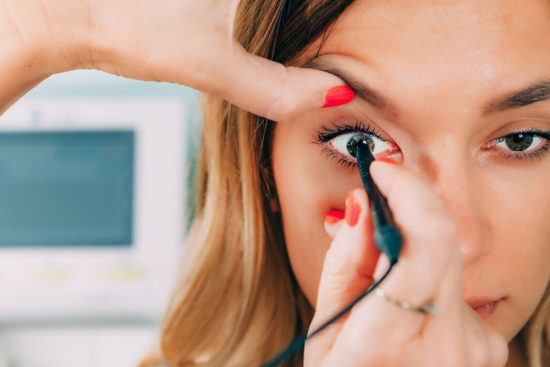Corneal pachymetry is a measurement of the thickness of the cornea, the transparent "window" of the eye. This non-invasive test is essential for assessing eye health. It is particularly useful for diagnosing and monitoring conditions such as glaucoma, a disease that damages the optic nerve, and keratoconus, an irregular thinning of the cornea.
- People who want to measure corneal thickness.
- Corneal topography.
- Biomicroscopy.
- Ocular ultrasound.
- Fluorescein angiography.
- Between 5 and 10 minutes.
Cost of corneal pachymetry in Turkey
The cost of corneal pachymetry in Turkey is estimated to be between 50 and 350 Euros. The average price is around 200 Euros.
Consider Turkey for your eye diagnosis and treatment. We'll take care of everything from your arrival to your return and provide you with a personalized quote tailored to your specific needs.
Our partner clinics, renowned for their expertise and state-of-the-art equipment, guarantee quality care at competitive rates.
Best Clinics with Verified Reviews

- Multispecialized hospital
- 7 operating rooms
- Capacity é of 170 beds

- Multispecialized hospital
- Hospital founded in 2007
- Very good reputation in ENT department
Why perform corneal pachymetry?
Corneal pachymetry, measured in microns, provides an accurate map of corneal thickness. This measurement is essential to:
- Optimizing the planning of eye surgery, such as refractive surgery, by accurately assessing the risk of complications.
- Refining the diagnosis and monitoring the progression of glaucoma by providing a more accurate estimate of intraocular pressure and guiding the adjustment of treatment.
- Detect and monitor pathologies such as keratoconus, characterized by progressive thinning of the cornea, to initiate appropriate treatment as early as possible.

Glaucoma and corneal pachymetry
Glaucoma, a disease that can lead to blindness, is often associated with high pressure inside the eye. To assess this pressure, ophthalmologists in Turkey use a device that measures the eye's resistance to light pressure. However, this measurement can be distorted if the cornea, the transparent part at the front of the eye, is too thick or too thin.
This is where pachymetry comes in. This test accurately measures the thickness of the cornea. By knowing this value, doctors can better interpret the results of eye pressure measurements.
Think of the cornea as a balloon. The thicker the balloon, the harder it is to deform. Similarly, a thick cornea will make the eye pressure read higher than it actually is. Conversely, a thin cornea will deform more easily, resulting in an underestimation of eye pressure.
What you need to know before pachymetry
Pachymetry is a simple, painless test that measures the thickness of your cornea.
No special preparation is needed. No mydriatic eye drops (to dilate the pupil) are needed, and there is no visual discomfort.
The exam is performed by an orthoptist using a device that is customized for your situation. Several types of devices are available: ultrasonic pachymeter, optical pachymeter, corneal topographer, or anterior segment OCT.
The results, expressed in microns or as a map, are interpreted by an ophthalmologist.
Corneal thickness measurement techniques in Turkey
There are several techniques for measuring corneal thickness, all of which are painless:
- Ultrasonic pachymeter: A small device emits ultrasound waves that pass through the cornea. This method is fast and does not require fixation of the eye.
- Spectral OCT and corneal topography: These exams use light to create 3D images of the cornea, which can be used to accurately measure corneal thickness.

Corneal pachymetry procedure
The corneal pachymetry exam is painless and quick. An anesthetic eye drop is instilled into the eye before a measuring device is placed on the cornea. This device emits ultrasound waves to calculate the thickness of the cornea.
A healthy cornea is about half a millimeter (540 micrometers) thick. Readings that are too low or too high may indicate the presence of pathology.
Interpreting corneal pachymetry results
In general, a normal corneal thickness result is in the range of 500 to 550 µm. However, this value may vary slightly from individual to individual and also depends on the instrument used.
Increased thickness (greater than 550 microns)
This may indicate an increased risk of false high intraocular pressure readings.
A thicker than normal cornea may be associated with :
- Corneal edema (fluid buildup in the cornea).
- Certain diseases, such as Fuchs' dystrophy.
- Corticosteroid treatments.
Reduced thickness (less than 500 microns)
This may indicate an increased risk of false low intraocular pressure readings.
A thinner-than-normal cornea may be associated with :
- Keratoconus.
- Marginal pellucid degeneration.
- Poorly performed refractive surgery.
Only your eye care professional can interpret your pachymetry results in their clinical context and explain the implications for your eye health.
Share this page







